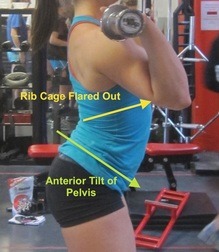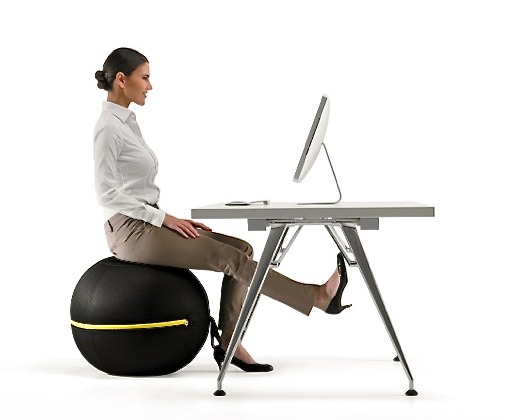Table of Contents
Pelvises Were Restored
It was another great PRI weekend and I was fortunate enough to host the hilarious Lori Thomsen to teach her baby, Pelvis Restoration.
Lori is a very good friend of mine, and we happened to have two of our mentees at the course as well. Needless to say it was a fun family get-together.
Lori was absolutely on fire this weekend clearing up concepts for me and she aptly applied the PRI principles on multiple levels. She has a very systematic approach to the course, and is a great person to learn from, especially if you are a PRI noob.
Here were some of the big concepts I shall reflect on. If you want the entire course lowdown, read the first time I took the course here.
Extension = Closing Multiple Systems
This right here is for you nerve heads.

It turns out the pelvis is an incredibly neurologically rich area.
What happens if a drive my pelvis into a position of extension for a prolonged period of time?
I’ve written a lot about how Shacklock teaches closing and opening dysfunctions with the nervous system. An extended position here over time would increase tension brought along the pelvic nerves. Increased tension = decreased bloodflow = sensitivity.
We can’t just limit it to nerves however, the same would occur in the vasculature and lymphatic system. We get stagnation of many vessels.
Perhaps we need to think of extension as system closure; a system closing problem. Flexion will be the solution to open the system.

Synchronized Diaphragms
Pausing after an exhalation gives diaphragms time to ascend. Diaphragmatic ascension maximizes the zone of apposition (ZOA). The better ZOA we have, the less accessory musculature needed to take an adequate breath.
The two important ZOAs needed in this course are at the thoracic and pelvic diaphragms. We want to build synchronicity between these two diaphragms.
The way we do that is through the pelvic inlet.

The inlet links and adequately positions these two diaphragms via internal obliques and transversus abdominis (IO/TA).
To determine how this occurs, we must look at how breathing affects musculature.
This part here was a huge lightbulb moment for me. Muscle lengthening correlates with inhalation, and muscle shortening correlates with exhalation. So to create a stretch in areas you wish to lengthen, you may want to inhale, and to increase muscle contractility, you may with to exhale.
[Note: This is one reason in lifting exhalation is during the concentric phase and inhalation is during the eccentric phase?]
Now lets apply this concept to the pelvic inlet in an extended system. Let’s say the left innominate is forward (a LAIC pattern). My left IO/TA on would be eccentrically lengthened and in a state of inhalation. The left thoracic and pelvic diaphragms would be tonically active and form a v-shape.

This dyssynchrony explains why certain pelvic and thoracic tests correlate. The LAIC pattern suggests that I would not be able to adduct my left hip.
At the pelvis, this would occur because I have a “long” left anterior outlet and “short” posterior outlet.
The outlet and the thorax reflect one another. In this case, my anterior outlet is equivalent to the ipsilateral anterior chest wall and my posterior outlet is equivalent to the posterior mediastinum.
Guess what the tests will look like? I will have good left apical expansion and limited left posterior mediastinum expansion. I can’t adduct my left thorax or abduct my right thorax, much like I can’t adduct my left hip or abduct my right hip. These tests look at the same thing the pelvic tests do.

The Definitive Word on PRI Squatting
We can look at one’s ability to actively synchronize the thoracic and pelvic diaphragms by one’s ability to squat.
The functional squat test is an excellent way to show if one is capable of maximal pelvic diaphragm ascension and can shut off extensor tone. It also is a test to see if one has a patho-compensatory pelvic floor; for if you can squat but can’t adduct your hips, you gotz problems.
Here is what the functional squat test is not: a position to go under load in the weight room.
The above was straight out of Lori’s mouth. So to all the people who talk smack about the PRI squat, your answer is above. It’s not looking at the same thing as a max effort back squat.
Done.

Here’s how to test it.
Sitting is Hahhhd
In PRI land, sitting is the most challenging position to be in.

Why? Because there are less points which one can reference. Sitting unsupported requires proprioception exclusively on your ischial tuberosities. Success here relies on alternating and reciprocal muscle recruitment. If I don’t have this, I will extend.
Some Quick Postural Eyes
Lori is a great at predicting how dynamic movements will look on the table. Here were a couple things that stood out to me in this regard, as well as a couple other random things.
- Leg whipping means an individual likely has a femur stuck in adduction.
- Patho-compensatory people usually have more narrow hips. Could possibly be more common in males for this reason.
- People who lean to one side in gait need a glute med.
- If one cramps during an exercise, think inhibition. We’d rather shaking.
- Glute med is the needed ligamentous muscle if a hip subluxes laterally.
- Furniture is made to fit people who are 5’8.
- Hard orthotics = overrated. We want a soft heel cup and arch to be used proprioceptively.
Lori-isms
- “I like to refer to myself as your coach.”
- “You can’t work the same muscle in a different position and expect the same outcome.”
- “You know I’m going to have to spend some time on this little booger.”
- “If you want to give more pelvic instability stretch hamstrings.”
- “She trusts me and I make her shake which is all good.”
- “PECs cannot breathe to the high moon.”
- “Getting neutral is not treatment.”
- “Her back needs to go on a holiday.”
- “Run with ribs.”
- “When you go run, run.”
- “We like extension, just not 24 hours a day 7 days a week.”
- “If your patients cannot breathe correctly, don’t do a PRI activity. They will fail.”
- “Not everyone needs a pair of glasses. Some people need a diaphragm.”
- “I’m not a comedian. I’m here to teach you.”
- “We’re [the clinician] not in control. We’re just invited to the party.”
- “I get excited when I feel my right glute max burn.”
- “You normal human being you.”


Hi Zac – Thanks for the course summary and video of the functional squat, very helpful. I like the way you linked the thorax and outlet. I hadn’t put that together. Is it too simple to think of the diaphragms also reflecting each other? I like to view both as being stretched out and needing to be re-domed as we often discuss in respiration. Also, which test are you referring to when you speak of thorax abduction and adduction – torso rotation? Thanks! Jessica
Hey Jessica,
That is not at all a simple thought. You are spot on. Though they are more overly contracted in the pattern. Re-doming would lengthen.
Thoracic abduction/adduction – apical expansion
Torso rotation – posterior mediastinum expansion; also trunk rotation and horizontal abduction